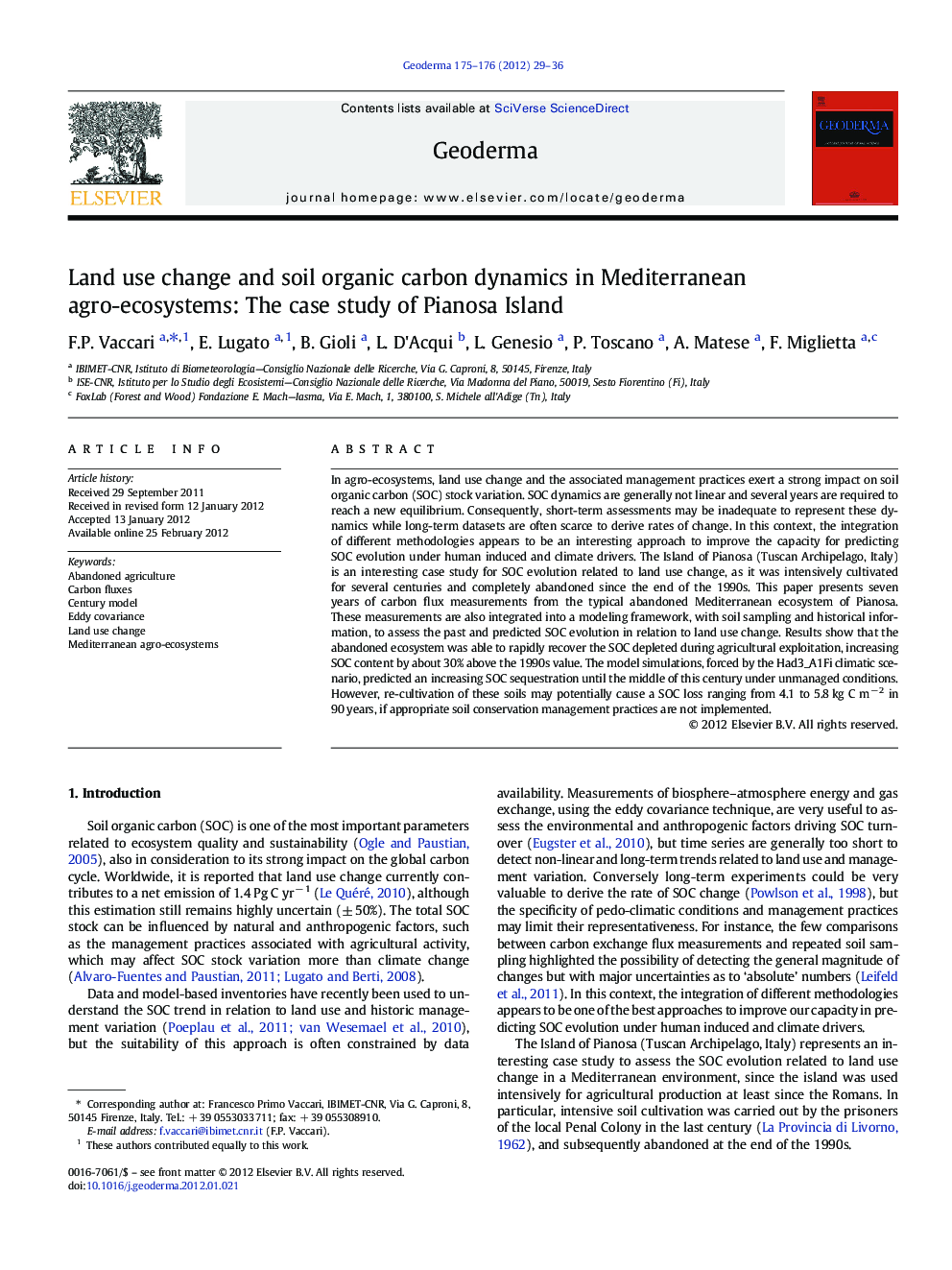| Article ID | Journal | Published Year | Pages | File Type |
|---|---|---|---|---|
| 4573971 | Geoderma | 2012 | 8 Pages |
In agro-ecosystems, land use change and the associated management practices exert a strong impact on soil organic carbon (SOC) stock variation. SOC dynamics are generally not linear and several years are required to reach a new equilibrium. Consequently, short-term assessments may be inadequate to represent these dynamics while long-term datasets are often scarce to derive rates of change. In this context, the integration of different methodologies appears to be an interesting approach to improve the capacity for predicting SOC evolution under human induced and climate drivers. The Island of Pianosa (Tuscan Archipelago, Italy) is an interesting case study for SOC evolution related to land use change, as it was intensively cultivated for several centuries and completely abandoned since the end of the 1990s. This paper presents seven years of carbon flux measurements from the typical abandoned Mediterranean ecosystem of Pianosa. These measurements are also integrated into a modeling framework, with soil sampling and historical information, to assess the past and predicted SOC evolution in relation to land use change. Results show that the abandoned ecosystem was able to rapidly recover the SOC depleted during agricultural exploitation, increasing SOC content by about 30% above the 1990s value. The model simulations, forced by the Had3_A1Fi climatic scenario, predicted an increasing SOC sequestration until the middle of this century under unmanaged conditions. However, re-cultivation of these soils may potentially cause a SOC loss ranging from 4.1 to 5.8 kg C m− 2 in 90 years, if appropriate soil conservation management practices are not implemented.
► The abandoned agricultural lands can be important carbon sinks. ► Land use change is the driving factor of soil carbon evolution in the Mediterranean. ► Recultivation of abandoned Mediterranean soils may cause a soil organic carbon loss.
